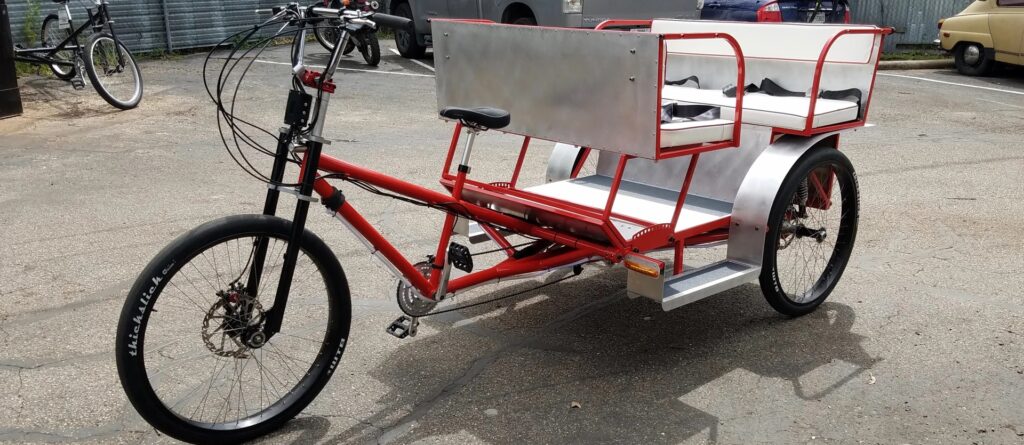Electric rickshaw bikes, often referred to as e-rickshaws or electric tuk-tuks, are rapidly emerging as a transformative force in urban mobility, especially in densely populated cities. Their role in reducing traffic congestion is increasingly recognized as a vital component in modern transportation planning. This essay explores how electric rickshaw bikes contribute to alleviating traffic issues and their broader impact on urban environments. Firstly, electric rickshaws offer a compact and efficient mode of transportation that significantly reduces road space consumption compared to conventional vehicles. Traditional taxis, buses, and cars occupy more space and often contribute to traffic jams, especially during peak hours. In contrast, e-rickshaws are smaller and can navigate through congested streets more easily, allowing for better utilization of limited road space. This efficiency helps in mitigating traffic congestion, in crowded urban areas where space is at a premium. Additionally, e-rickshaws are typically used for short-distance travel, making them ideal for local commutes and last-mile connectivity.

This focus on short trips means that they often replace single-occupancy vehicles, such as cars, which are less efficient for short journeys. By reducing the reliance on personal cars for short trips, electric rickshaw bike help decrease the number of vehicles on the road, thereby reducing traffic congestion. The environmental benefits of electric rickshaws also contribute indirectly to easing traffic congestion. Unlike traditional rickshaws or automobiles that run on fossil fuels, e-rickshaws operate on electric power, resulting in zero tailpipe emissions. This reduction in air pollution can lead to improved air quality and public health, making urban areas more pleasant to navigate. Cleaner air can also encourage more people to opt for eco-friendly transportation options like e-rickshaws, further decreasing the number of conventional vehicles on the road and easing congestion. They can connect commuters to main public transit hubs like bus stations and train stations, providing a seamless transition from one mode of transport to another. This integration helps reduce the number of private vehicles used for short trips to public transit stations, thereby contributing to less congestion in these areas.
Electric rickshaws are more affordable to operate and maintain compared to traditional vehicles. This affordability makes them a popular choice for low-income individuals and small-scale operators. As a result, they provide an alternative to expensive modes of transport, reducing the number of private cars on the road and further easing traffic. However, to maximize the benefits of electric rickshaws in reducing traffic congestion, several considerations need to be addressed. Proper infrastructure, such as dedicated lanes for e-rickshaws and adequate charging stations, is essential to support their widespread adoption. Electric rickshaw bikes play a significant role in reducing traffic congestion through their compact size, efficiency in short-distance travel, environmental benefits, and integration into public transport systems. By offering an eco-friendly and cost-effective alternative to traditional vehicles, they contribute to a more efficient and less congested urban transportation network. As cities continue to grow and face increasing traffic challenges, the role of Motrike electric rickshaws in shaping a more sustainable and manageable urban mobility landscape will likely become even more important.

